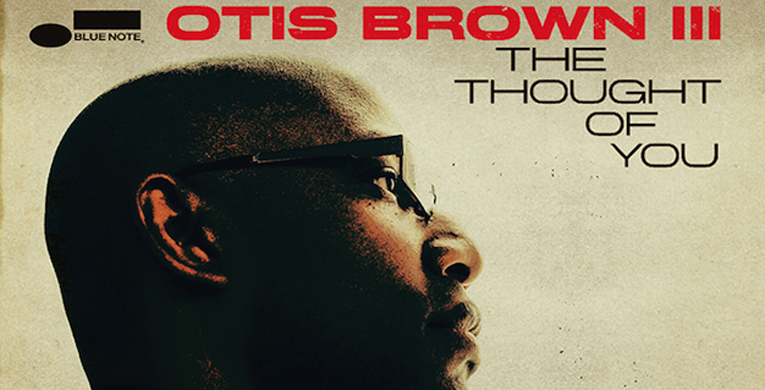
Blue Note Records released Grammy Award-nominated drummer Otis Brown III’s debut album “The Thought of You,” featuring vocalists such as Bilal, Nikki Ross and Gretchen Paralto.
Brown III is known for his work with prominent modern jazz artists such as Joe Lovano and Us Five, Esperanza Spalding, Terrence Blanchard and many others.
“A fierce and flowing agent of rhythm, Mr. Brown has the foundation to go in a number of directions,” The New York Times said. “On ‘The Thought of You,’ co-produced by Derrick Hodge, he pursues each, all at once.” Hodge is known for his work with the very successful Robert Glasper Experiment.
Pianist Robert Glasper plays a major part in this record’s sound and identity with his staple piano style and also his arrangement on the surprising cover of Shania Twain’s “You’re Still the One.”
Glasper accompanies Brown III throughout the record, with John Ellis on saxophone, Keyron Harrold on trumpet and Ben Williams on bass. All but Harrold were classmates of his at the New School for Jazz and Contemporary Music in New York.
“The most special thing about working with Otis is simply the joy he gets out of playing music; it’s all over his face like a little kid,” Glasper said. “People have lost that joy and take playing too seriously.”
This album is a great example of the recent revival of Blue Note as a major jazz label. The listener gets a taste of Brown III’s hip-hop, gospel and R&B influences are, while also experiencing a familiar, authentic Blue Note sound, particularly on the opening track “The Way” and “Stages of Thought.”
This latter track has a “really ominous, looming, lumbering lead melody,” according to YouTuber Anthony Fantano. The song ends with an evident tribute to hip hop culture, as the New York Times said, describing the track as a “brooding postbop burner in oblong meter, with a coda that emulates the hip-hop producer J Dilla, in perfectly contemporary fashion.”
One of the elements that makes this record intriguing is the title-track, “The Thought of You,” which features a brilliant performance by neo-soul singer Bilal. It does a wonderful job of demonstrating Bilal’s prowess not just as a soul singer, but as an artist with authentic jazz chops,” according to Expansions Collective. It is an upbeat tune turning into a long jam, divided in three parts which are spread throughout the track list.
“There might be a purely practical reason for the tune’s tripartite form, starting with track length,” The New York Times said. “But as Mr. Brown makes clear elsewhere, he’s interested in the power of three, as a spiritual concept.” This shows another element that the listener is exposed to throughout this album, Brown III’s dearest values that he seems to have a profound need to express in his music.
As Blue Note described it, the record “embodies the essence of what Brown holds most dear: faith and family,” whether through a long gospel medley or through the beautiful track “The Two Become One,” dedicated to his wife.
“Everything on this record is a part of me,” Brown III said. Co-producer of the album Derrick Hodge emphasized this side of Brown and said, “Otis has become one of those drummers who once you hear him play, his experience becomes your experience in the moment.”
































